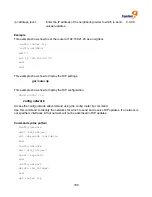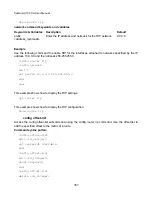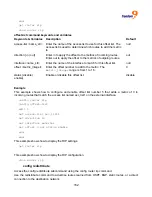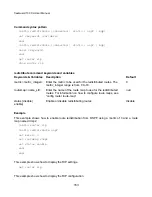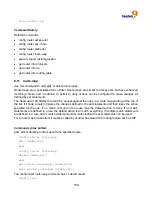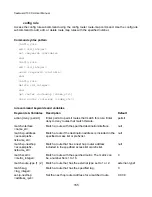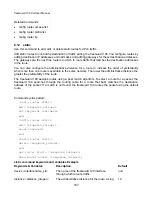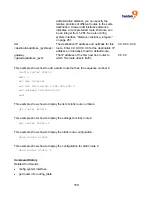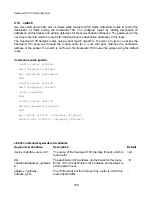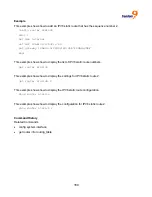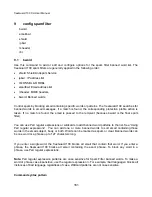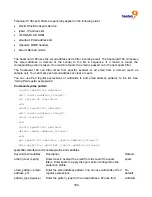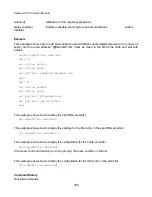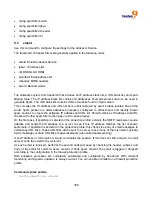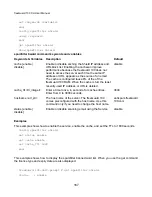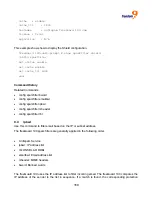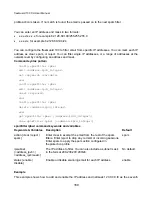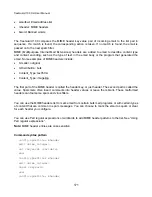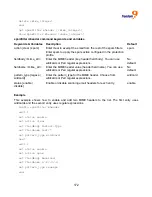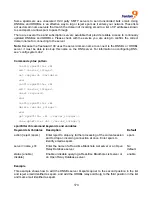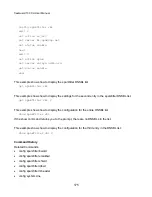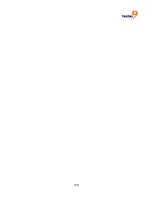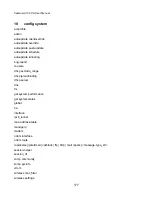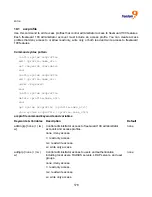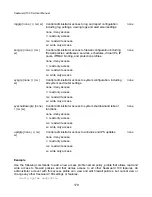
164
FreeGuard 100 spam filters are generally applied in the following order:
•
shield: Shield Antispam Service
•
ipbwl : IP address list
•
rbl: DNSBL & ORDBL
•
emailbwl: Email address list
•
mheader: MIME headers
•
bword: Banned words
The freeGuard 100 uses the email address list to filter incoming email. The freeGuard 100 compares
the email address or domain of the sender to the list in sequence. If a match is found, the
corresponding action is taken. If no match is found, the email is passed on to the next spam filter.
The freeGuard 100 can filter email from specific senders or all email from a domain (such as
sample.net). You can mark each email address as clear or spam.
You can use Perl regular expressions or wildcards to add email address patterns to the list. See
“Using Perl regular expressions” .
Command syntax pattern
config spamfilter emailbwl
edit <email-address_integer>
set <keyword> <variable>
end
config spamfilter emailbwl
edit <email-address_integer>
unset <keyword>
end
config spamfilter emailbwl
delete <email-address_integer>
end
get spamfilter emailbwl [<email-address_integer>]
show spamfilter emailbwl [<email-address_integer>]
spamfilter emailbwl command keywords and variables
Keywords & Variables
Description
Default
action {clear | spam}
Enter clear to exempt the email from the rest of the spam
filters. Enter spam to apply the spam action configured in the
protection profile.
spam
email_pattern <email-
address_str>
Enter the email address pattern. You can use wildcards or Perl
regular expressions.
No
default.
pattern_type {regexp |
Enter the pattern_type for the email address. Choose from
wildcard
Summary of Contents for freeGuard 100
Page 1: ...freeGuard 100 UTM Firewall CLI USER S MANUAL P N F0025000 Rev 1 1...
Page 3: ......
Page 7: ......
Page 87: ...80 The config ips anomaly command has 1 subcommand config limit...
Page 183: ...176...

